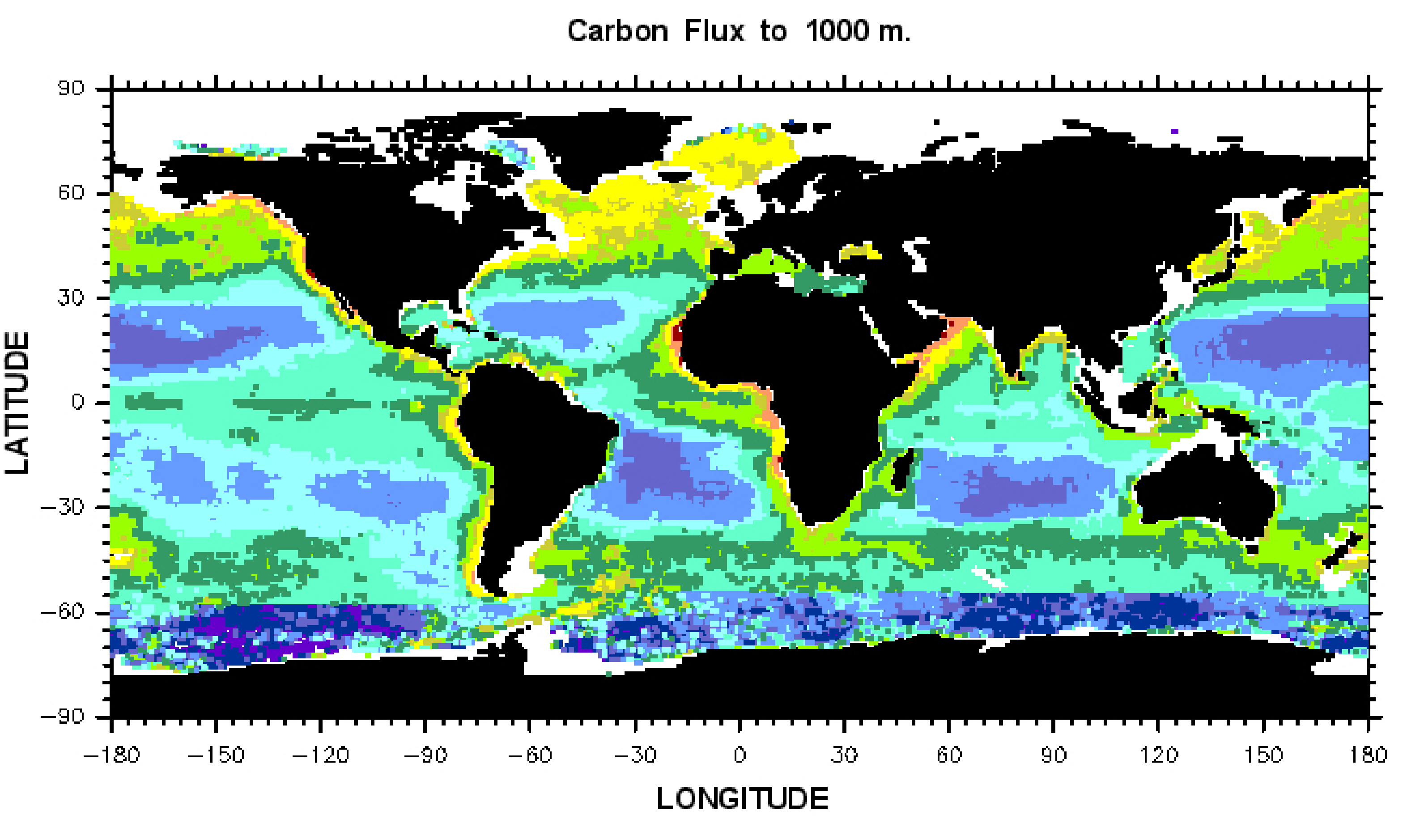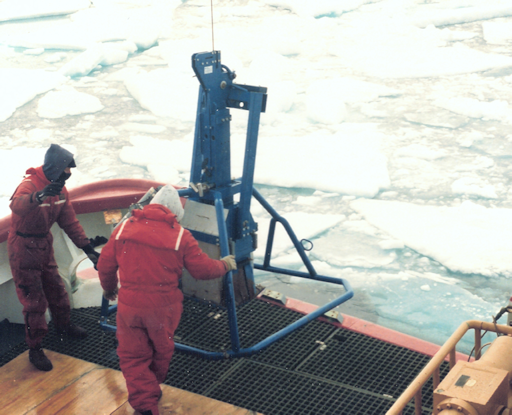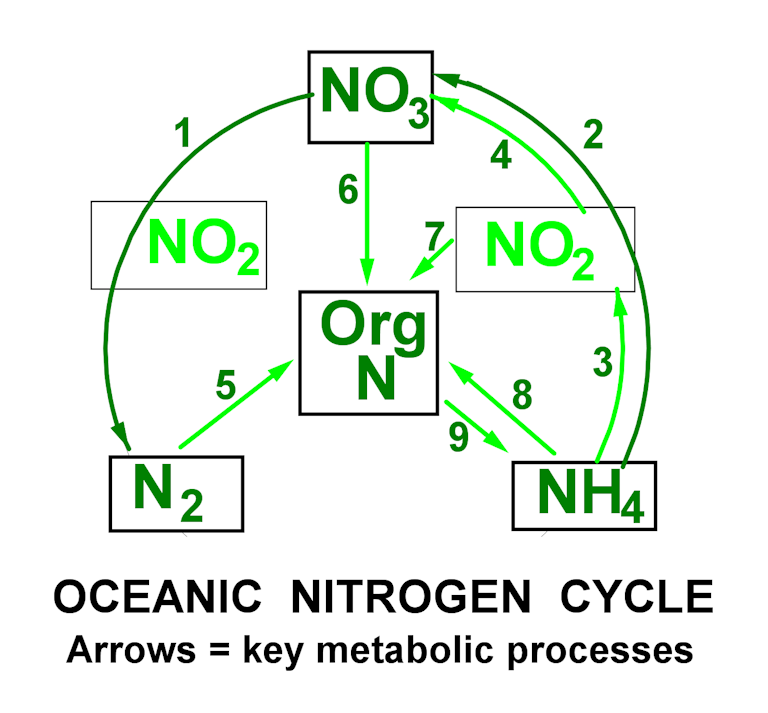Literature about the earth ocean
Global Role of Deep-sea Sediments
To better understand how the ocean’s plant production feeds the entire ecosystem below the sunlit surface, the relationship between the respiration of the biological community found in deep-sea sediments and the overlying productivity was investigated. A statistical relationship was found between rates of community respiration of deep-sea sediments and the average plant production in the overlying surface waters. From this relationship and satellite-based estimates of plant production throughout the surface ocean, the proportion of the plant productivity sinking to a depth of 1000 m and the proportion which reaches the sediments were calculated for all regions of the open oceans.

Distribution of the amount per year of sinking organic carbon that reaches the depth of 1000 m.
Shelf Sediments Limit Oceanic Nitrogen
Within sediments, multiple species with greatly different metabolic types co-exist, each extracting as much metabolic energy as possible from the available organic matter. One process, the conversion of usable nitrogen into nitrogen gas (denitrification) may be globally significant. This study estimates the global rate of this nitrogen loss from continental shelf sediments. The results show that this process acts to reduce the oceanic nitrogen content, which may limit productivity of the world oceans.
The Global Oceanic Nitrogen Cycle
In much of the ocean, plant productivity is limited by the low levels of nitrogen found in near-surface sea waters. In these two articles, the ocean’s nitrogen cycle is evaluated. In the first, the nitrogen losses in the South Pacific Ocean were evaluated. In the second, nitrogen inputs and losses throughout the entire ocean system were estimated. The major mechanism of nitrogen loss is via the metabolic process of denitrification (arrow #1). As more scientific studies looked at this process, the total denitrification rate throughout all the oceans was found to be greater than had been accepted previously. As a result, this process could have a decisive linkage over how much atmospheric CO2 the ocean can absorb, which would influence upcoming climate change.
1—–


